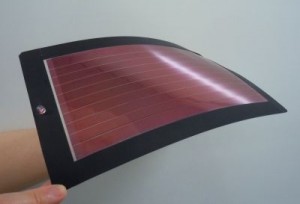
Now Mitsubishi Chemical Corp has announced it has developed a spray-on solar power technology whereby solar cells can be applied to buildings, vehicles and even clothing, just like painting. The solar cells are very thin (less than 1 millimeter thick) and weigh less than one tenth of crystalline solar panels of the same size.
According to a report in the UK Independent newspaper, the solar cells use carbon compounds which as semiconductors when dried and solidified, generating electricity when exposed to light. The potential to save space required by conventional solar panels and the versatility of the technology could hail a new era for solar power.
Mitsubishi Chemical’s prototype spray-on solar cells offer a light-to-electricity conversion rate of 10.1 per cent. Traditional crystalline silicon solar cells offer up to 20 per cent, so the new technology still lags behind. But Mitsubishi said it hopes to improve efficiency to 15 per cent by 2015.
The company’s first plan is to apply its technology on cars, coating them with solar cells. It says it could give a car sufficient power to travel six miles after two hours of exposure to the sun.
You should follow us here.






This sounds like an interesting development. One big question would be – what is the adhesive quality of the product. Although the light-to-electricity conversion is lagging, it would also be interesting to understand how often this product may need to be reapplied depending on durability and region.